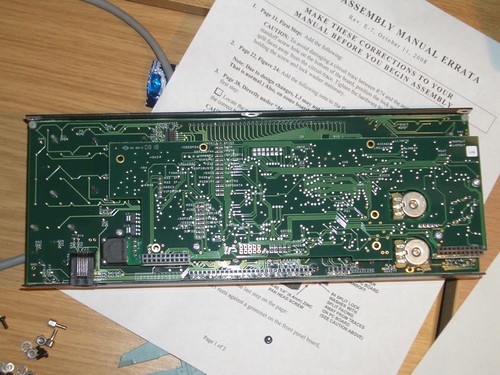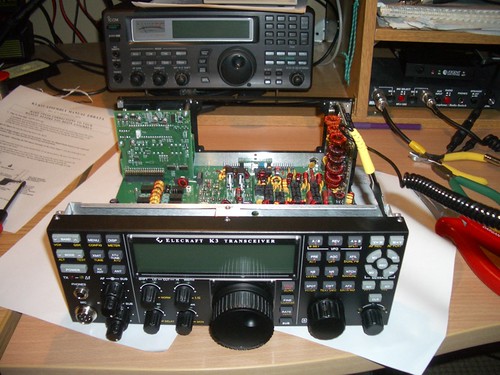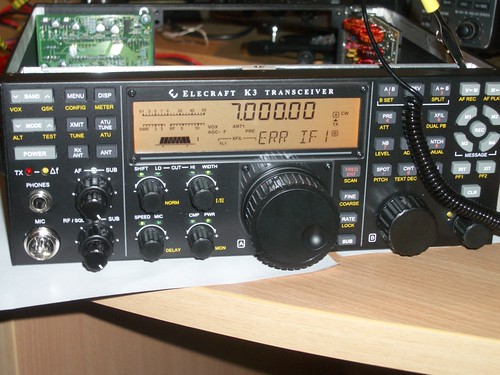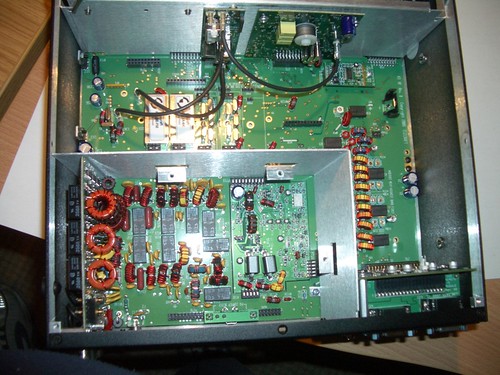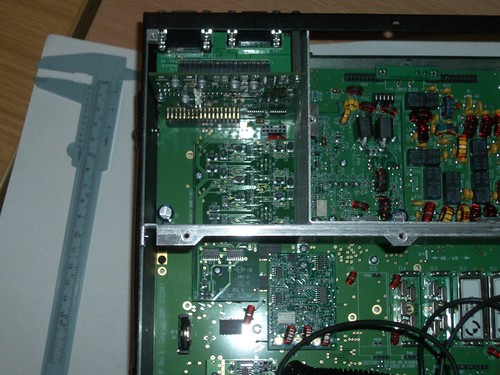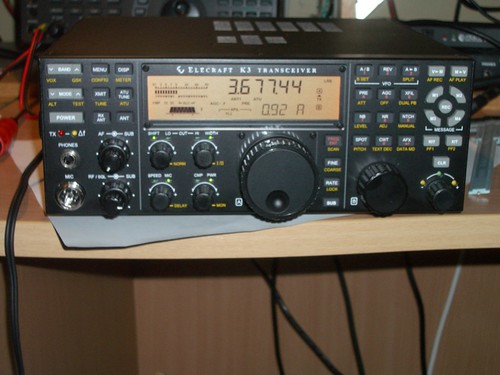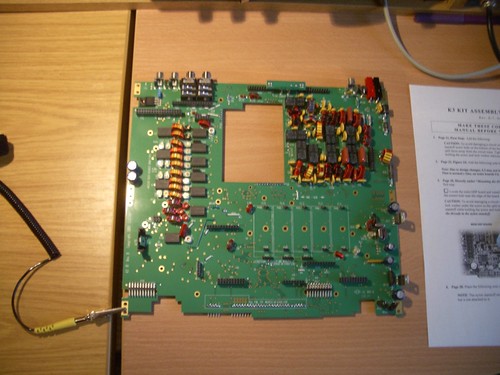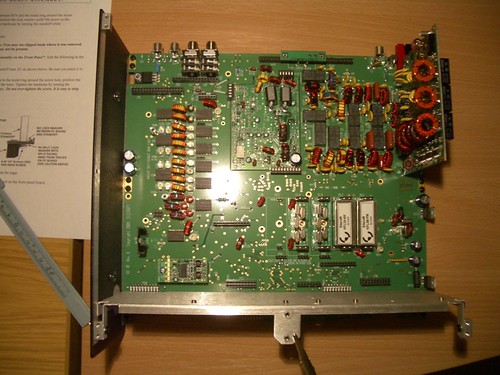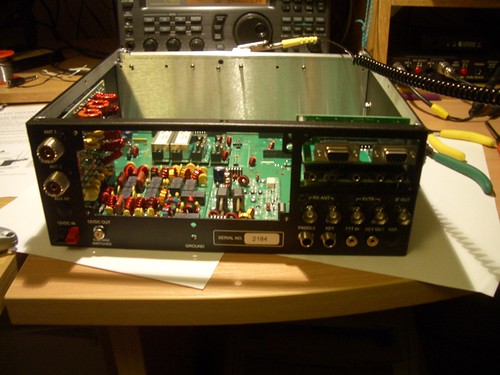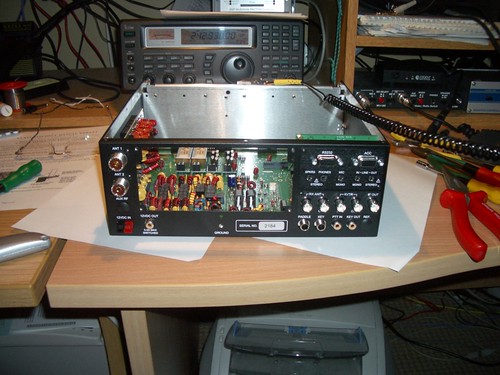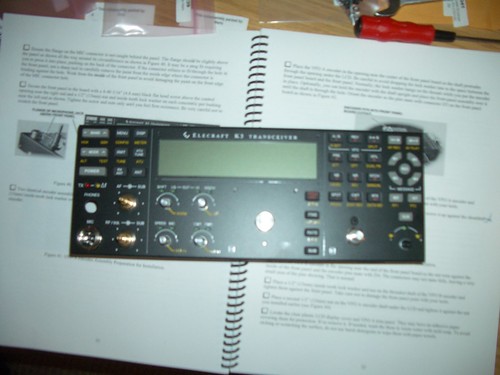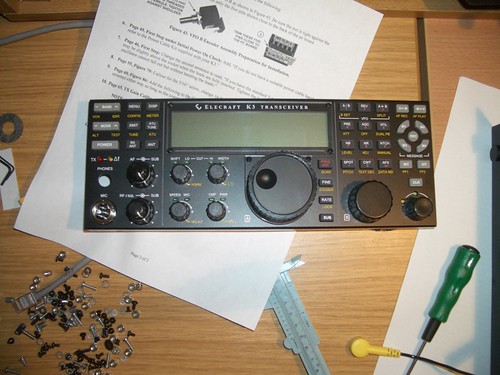I knew this already, but as Jeff says, seeing some privacy issues presented as simply and starkly as that does make it a little scary.
Monthly Archives: November 2008
Irish IPv6 Summit.
Through where I work, I’ve been using/breaking/experimenting with difference facets of IPv6 for several years. Part of what TSSG has been doing is attempting to raise awareness about IPv6 whenever the opportunity arises. As part of the Irish IPv6 task force, TSSG is helping to organise an IPv6 Summit, which is expressly for the purpose of raising awareness in the public and private sectors. Even if you have only a passing interest, do come along (and ask difficult questions!).
K3 #2184 (part 2)
It started raining again Sunday afternoon, so a perfect opportunity to resume construction 😉
First, attach the DSP Board to the back of the front panel.
Attach the front panel to the main chassis.
Initial power on test, fortunately no smoke escaped!
Oscillator board installation (you can see the filters on the main RF board)
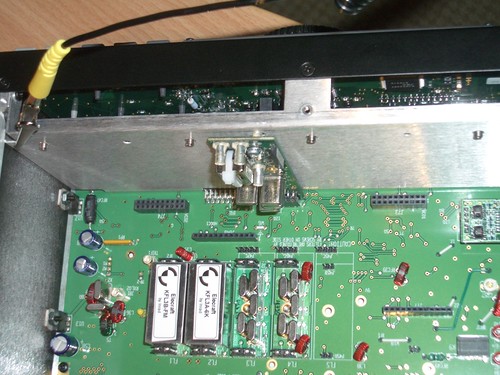
Synthesiser board installation. This (along with the oscillator board above) was the most difficult board to install, requiring lots of patience as I kept dropping the washers into the chassis.
Power Amplifier Shield
General coverage Receive filters, Noise Blanker, and Lithium Ion Battery.
Forgot to take a picture of the 100W PA going in. All built now, just needs calibration.
Pretty much everything checked out ok. I still have to calibrate the TXCO, though as it is, it is probably more than adequate for my needs. Now I just need to get time to get on the air.
Thank you Elecraft.
K3 #2184 (part 1)
It arrived yesterday, but I was too tired to do anything with it last night. When I opened the box this morning, I instantly thought I had made a big mistake getting it in kit form. Lots of little bags with more little components all labelled very very carefully.
I got some courage up after lunch and pulled it all out of the box, everything I ordered seemed to be present, so I took a deep breath and opened the first anti-static bag.
It progressed rapidly after that.

Enough for today. I only panicked once (when I couldn’t find the 2-56 1/4″ screws for the LCD standoffs), and only made two mistakes that I know of (so far) which happened on KIO3. Many thanks to Mario, Marina, Dina, Patricia, Sharron and Ellison for your attention to detail while packing.
Elecraft K3
Firstly, this is all Brendan, EI6IZ’s fault for persuading me I needed one. He caught me in a weak moment.
Santa is coming to me slightly early this year. I received my “Katiegram” today, a full month earlier than I was expecting. I’m so excited I can hardly wait to pull open the box of components to start assembly. Woot!
PTCIIex and Kiss mode.
I spent some time trying to figure this out (for the second time in 12 months) today. The SCS PTCIIex keeps the settings of txdelay, persist, slottime, fulldup and baud AFTER it has been put into KISS mode. The “kissparms” command has no effect whatsoever.
Power Consumption.
Here are some rough figures that I’ve come up with for ‘annual’ usage.
- PC/UPS/Dsl Router, 990kWh
- Fridge/Freezer, 525kWh
- Work Laptop(at home)/Screen/Wireless Router , 235kWh
- Chest Freezer, 182kWh
- Kettle, 182kWh
- Sky Box, 142kWh
- TV/DVD/Speakers, 118kWh
- Washing Machine, 93kWh
- Printer/ancillaries, 89kWh
- Projection Alarm clock, 34kWh
- Toaster, 6Kwh
Biggest surprise for me was the small chest freezer, it seems to be very efficient. I’ll have to think a bit more about the rest.
Magic Smoke!
Unfortunately I accidentally released the magic smoke (sorry Scott, didn’t mean to hurt it) from the venerable OT-1 that I was using to measure my PV array (see my earlier post). So I’ve parked that experiment for a while. As we get closer to the solstice, its amazing (to me) to watch the amount of ‘sun hours’ available to the panel decrease. I’ll have to begin negotiations with SWMBO for a better location for them next year.
DTN over AX25 – Update.
Dissapointingly it has taken far to long to get back to this (see my earlier post), but recently Darren and I managed to be both online over the same few days to organise some testing. The infrastructure has changed slightly, in that the testing is now taking place through an AX25 Digipeater on a 1200bps Packet Channel, with the nodes being approximately 32Km distant from one another.
Both machines were Ubuntu 8.04, with kernel 2.6.17 on my end, 2.6.24 on the far end, latest ax25 utilities and tools.
My end was used to bring up the link every time (The far end has no /proc/ax25, so I can’t sent the ax25 parameters remotely, I’ve to change/rebuild the kernel afaik)
Through the digi we used the following settings when setting up the kiss ports. Txdelay of 150ms, paclen of 255, maxframe set to 1.
We quite quickly identified a problem with ‘chattyness’ (the locals got upset), and Darren did some re-work. Since then its performing much better, and the locals are much happier. I was away for a bit and Darren has updated the code some more, so more testing for me I think.
Given that I’m looking at this from an Emcomm/AREN point of view, I’m really pleased with how its progressed so far, and I think Darren may even be considering sending the code ‘upstream’.
./configure ; make; sudo make install

